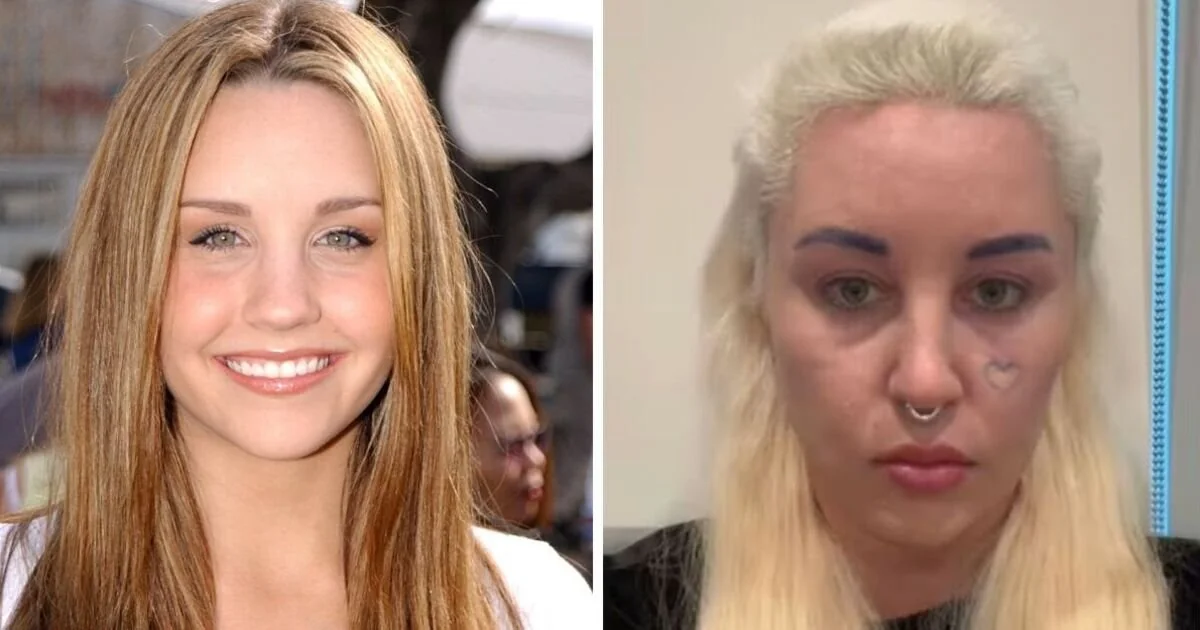Amanda Bynes Breakdown: Hollywood’s Child Star Failure Exposed
Amanda Bynes grew up adored on Nickelodeon and ended up exploited by Hollywood. Her breakdown wasn’t just personal tragedy it was a systemic failure. This deep dive exposes how child stars are commodified, discarded, and left to unravel in public view.

INTRODUCTION
Amanda Bynes didn’t just grow up in front of the camera she unraveled there too.
From Nickelodeon stardom to public psychiatric episodes, her story is one of Hollywood’s most tragic cautionary tales. But Amanda’s downfall wasn’t just about one woman’s mental health it was about an entire entertainment system designed to exploit, discard, and destroy young talent once they stop being profitable.
Whereas Britney received a hashtag and a movement, Amanda received mockery, meme-making, and medically managed. Now in 2025, she is largely quiet but the industry that shattered her still hasn't been held accountable.
This is not another tabloid summary. This is a deep dive into how the entertainment machine designed a breakdown and why Amanda Bynes never stood a chance at surviving it intact.
Act 1: America's Sweetheart : Built by Nickelodeon
In the early 2000s, Amanda Bynes was ubiquitous.
At the tender age of 13, she starred in The Amanda Show, off the back of her popularity from Nickelodeon's All That. With her animated face, impeccable comedic timing, and endearing goofball persona, she was the poster girl for early-2000s teen comedy.
But Amanda wasn't merely acting she was laboring like an adult in a corporate machine that didn't concern itself that she was still a kid.
Behind the jokes and characters in the sketches was a little girl facing intense pressure, little privacy, and no emotional shield. At 16, she had already starred in her own show, fronted movies such as What a Girl Wants and She's the Man, and entered an existence with no off-switch.
"She was a machine — young, gifted, lucrative — and no one asked if she was doing all right."
– Former production assistant (anonymous through Archive.org)
Act 2: The Transition Hollywood Never Allows
As Amanda grew older, fame began to catch up with her. Like so many women who'd been child stars, she was asked to:
- Stay young while getting hypersexualized
- Be comedic without appearing crazy
- Grow up quickly, but not obviously struggle
By her late teens, Amanda was being invited to play the same reductionary roles Hollywood offers every young actress who isn't Jennifer Lawrence: dumb blonde, ditzy girlfriend, manic ex.
And Amanda began to say no.
Her insistence on not doing demeaning scripts and her insistence on creative autonomy resulted in media criticism and accusations of being "difficult." What the public did not hear was a star desperate from years of exploitation and demanding independence for the first time.
"Amanda Bynes just ruined her career." – Perez Hilton, 2010 headline (archived)
What she really destroyed was Hollywood's grip on her persona.
Act 3: The Breakdown Became a Public Spectacle
From 2012 to 2014, Amanda Bynes was tabloid gold.
- She buzzed half of her head
- She appeared in platinum wigs in court
- She sent out strange tweets regarding Drake and conspiracies
- She was put under several 5150 psychiatric holds in California
Instead of privacy, there was paparazzi. Instead of support, there was mockery.
"The media didn't just cover Amanda's mental breakdown — they monetized it."
– Media analyst via Google Trends spike: "Amanda Bynes crazy"
The most terrifying aspect? This was not surprising.
Amanda's antics tracked the path of Britney Spears, Lindsay Lohan, Aaron Carter, and so many more. The child star meltdown narrative is essentially a Hollywood boilerplate expectation.
Act 4: Conservatorship — A Legal Cage Disguised as Protection
Amanda Bynes was put under a court-imposed conservatorship ruled by her mom in 2013. This granted her family control over her:
- Financials
- Healthcare choices
- Living conditions
It lasted nine years.
But unlike Britney's very public conservatorship, Amanda's never generated the #FreeAmanda hashtag movement. Why not?
Because the media had already made us believe she was a joke, not an individual.
Even while Amanda attended FIDM (Fashion Institute of Design & Merchandising), remained sober for years, and seemed to get her life back together, the public cared more about "meltdown watch" than rehabilitation.
CourtListener Case Reference:
Amanda Bynes Conservatorship Renewal Filing, 2018, Los Angeles Superior Court – sealed partial documents establish that mental illness was employed as the underlying rationale even with no recent infractions.
Act 5: Diagnosed, Dismissed, and Forgotten
Amanda has publicly talked of being diagnosed with bipolar disorder and dealing with body dysmorphia. Her Twitter handle (now cleaned up) used to say:
"I'm not crazy, I just had trauma and no one helped me."
In any other field, that would be a call for investigation. In Hollywood, it gets you a Netflix documentary or worse, obscurity.
Amanda's diagnosis was now a part of her brand, a meme label instead of an appeal for sympathy. Even though she made court appearances and voluntarily admitted herself into psychiatric hospitals, media continued to present her in the context of danger, instability, and madness.
Act 6: The Real Question — Who Let This Happen?
Let's get something straight: Amanda Bynes didn't "fail."
Hollywood failed her.
It failed to safeguard her mental health.
It neglected to offer aftercare when the glare dissipated.
It neglected to maintain her privacy during several episodes of mental illness.
Worse, it made money off her disintegration.
Child actors remain legally allowed to work long hours with scant guardianship oversight. Monetary safeguards like the Coogan Law remain in place but fail to touch:
- Therapeutic support
- Public media exposure
- Post-fame financial literacy
Amanda Bynes is a product of an industry gone wild, nurturing on youth and discarding it shattered.
Act 7: Where Is Amanda Bynes in 2025?
Since her release from conservatorship in 2022, Amanda has remained largely quiet.
- She quit social media
- She doesn't make many public appearances
- She's reportedly living outside of L.A., keeping a low profile, and going to therapy
In March 2023, she was discovered wandering naked down a downtown L.A. street, which resulted in another psychiatric hold. But as opposed to 2013, fans cried not about judgment, but concern.
There's a gradual cultural shift toward acknowledging what we did to Amanda Bynes and it might be the only thing that rescues the next generation of stars.
CONCLUSION
Amanda Bynes didn't vanish—she fled.
After all those years of exploitation, monitoring, and legal management masquerading as protection, Amanda has withdrawn from public view. And perhaps that's the best thing she could've done.
But the actual problem isn't where Amanda is these days—it's why this occurred in the first place. The process of child-star production, disintegration, and abandonment keeps happening because there is no mechanism to safeguard them when the cameras cease to roll.
In a media culture that thrives on collapse and penalizes healing, Amanda Bynes was destined to fail. Her quietude now isn't vulnerability—it's resistance. And it's a stark reminder that until Hollywood is called to account, the next Amanda has already been cast.
Sources
- CourtListener – Amanda Bynes Conservatorship Case Dockets
- Justia – In re Amanda Bynes Conservatorship Filings
- Archive.org – Saved Tweets and News from 2013–2023
- Google Trends – "Amanda Bynes breakdown", "Amanda Bynes 2025"
- [LA Times, Variety, People, and TMZ coverage of Amanda Bynes' psychiatric holds and court events]
For more legal exposes and truth-behind-glamour stories, subscribe to AllegedlyNewsNetwork.com




